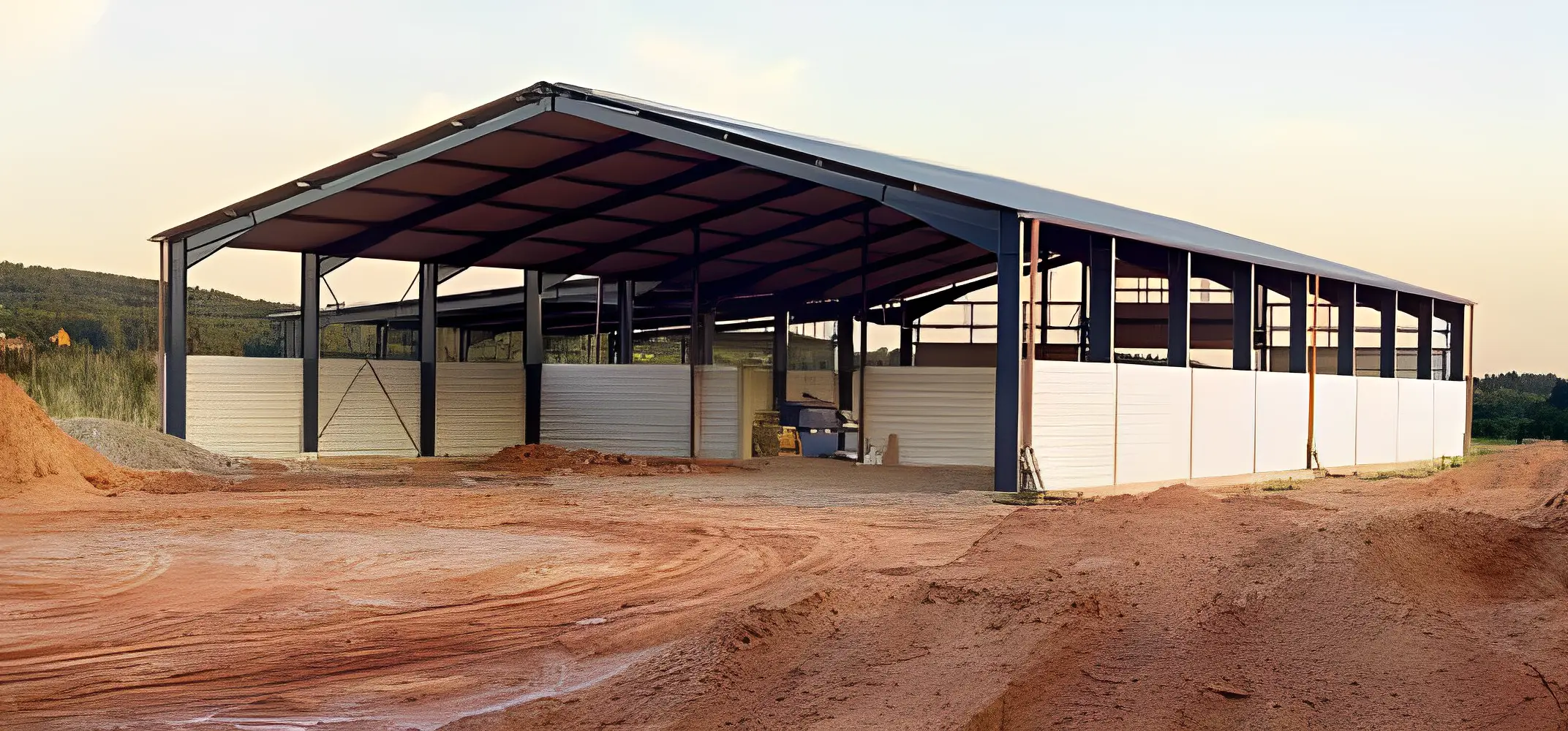Get in touch with us today for a personalized Shed Fabrication Works
Shed Works
Whether you need a robust industrial shelter, a spacious agricultural storage facility, or a weatherproof backyard haven, shed fabrication works hold the key to unlocking your space needs. This extensive guide, targeting the keyword "shed fabrication," dives deep into the world of metal structures, empowering you to make informed decisions about your next project. Understanding the Process: Shed fabrication involves transforming raw steel into customized structures through: Planning and Design: Collaborating with your fabricator to translate your vision into detailed blueprints, considering functionality, size, materials, and local regulations. Material Selection: Exploring options like galvanized steel, metal cladding, and specific grades for strength and durability. Cutting and Shaping: Utilizing advanced techniques like plasma cutting, CNC machines, and welding to achieve precise dimensions and intricate designs. Assembly and Erection: On-site or at the fabrication facility, skilled personnel meticulously assemble the steel components, ensuring structural integrity. Finishing Touches: Applying coatings for corrosion resistance, adding accessories like doors, windows, and ventilation systems, and customizing final details. Exploring Common Applications: Shed fabrication works cater to diverse industries and needs, including: Industrial Sheds: Warehouses, workshops, manufacturing facilities, heavy equipment storage. Agricultural Sheds: Grain storage, livestock shelters, farm machinery protection. Commercial Sheds: Retail spaces, carports, event venues, temporary structures. Residential Sheds: Backyard storage, hobby spaces, workshops, garages, pool enclosures. Factors to Consider When Choosing a Fabricator: Experience and Expertise: Seek established fabricators with a proven track record in your desired application and size range. Quality of Materials and Workmanship: Ensure they use high-grade steel, adhere to industry standards, and prioritize quality. Design and Engineering Capabilities: Look for fabricators offering in-house design support and collaboration to meet your specific needs. Project Management and Communication: Choose a team proficient in planning, scheduling, and keeping you informed throughout the process. Safety and Insurance: Verify certifications, safety protocols, and adequate insurance coverage for your peace of mind. Benefits of Utilizing Steel Sheds: Durability and Longevity: Withstand harsh weather conditions, resist corrosion, and offer long-lasting performance. Versatility and Customization: Tailored to diverse shapes, sizes, and applications, seamlessly integrating into your space. Strength and Security: Provide robust protection for your belongings and equipment, offering reliable structural integrity. Sustainable Choice: Recyclable steel minimizes environmental impact, and prefabricated designs reduce construction waste. Cost-Effectiveness: Compared to conventional construction methods, steel sheds offer competitive pricing and faster building times. Additional Considerations: Foundation and Site Preparation: Discuss foundation options with your fabricator to ensure proper support and compliance with local building codes. Permits and Approvals: Secure necessary permits based on your project's size, location, and intended use. Maintenance and Upkeep: Regular inspections and basic maintenance ensure long-term functionality and aesthetic appeal. Beyond the Basics: Advanced Fabrication Techniques: Explore innovative laser cutting, robotic welding, and pre-engineered designs for enhanced efficiency and precision. Sustainable Practices: Opt for recycled steel, consider energy-efficient roofing and cladding, and minimize construction waste. Aesthetic Enhancements: Explore architectural cladding options, incorporate skylights for natural light, and customize finishes for a unique look.
Shed Construction provides high quality and safe shed construction services for Industrial, Garage, Warehouse and Terrace Sheds. Enhance your property with our reliable and service!
Unlock the door to stylish and functional sheds right here in Hyderabad! Our premium shed works are designed to elevate your outdoor space while offering exceptional durability.
Say goodbye to clutter and hello to organization with our wide selection of sheds available in various sizes, designs, and materials. Plus, our sheds are built to withstand the elements year-round, ensuring long-lasting protection for your valuable belongings.
Arcncube the leading industrial shed manufacturer in Hyderabad, offers tailored solutions that are not only durable but also adaptable to your unique requirements. Our industrial sheds are meticulously crafted using premium materials, ensuring they stand strong against even the harshest weather conditions and rigorous usage. With built-in resistance to corrosion and rust, our industrial sheds are engineered for longevity, requiring minimal upkeep over the years.

Don’t settle for just any ordinary shed when you can have a functional masterpiece. Join countless satisfied customers who have transformed their spaces with our top-ranking shed works in Hyderabad.